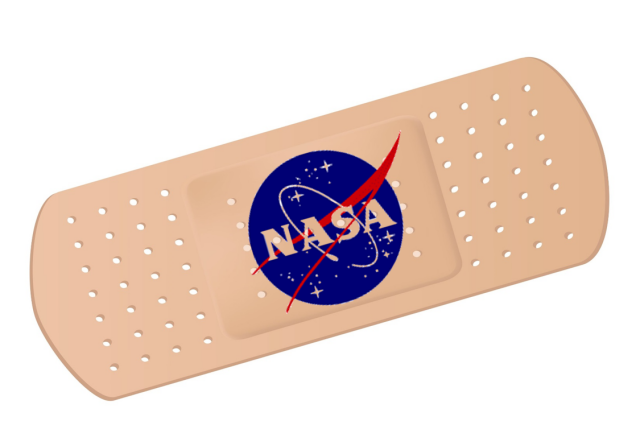Expecting the unexpected in space
NASA has a long history of repurposing old missions that finished or went wrong and ending up with great science
Sarah Lewin • December 16, 2013

NASA's missions are meticulously planned, but when something goes wrong they can improvise. [Image credit: Sarah Lewin]
On November 25, NASA announced a new mission for the Kepler space telescope. Since its launch in 2009, Kepler has focused on only a narrow sliver of space, where it has found over 3,000 possible planets around other stars, but when two of its four stabilizing wheels broke, Kepler could no longer aim carefully enough.The telescope no longer had enough power to combat the force of the sun’s photons hitting it and pushing it off course. Once NASA decided it would be too difficult to repair the broken wheels, the space agency put out a call to scientists for alternate missions that could make use of Kepler’s remaining observational powers and fuel.
Proposals ranged from keeping watch for asteroids approaching Earth to detecting bigger planets as they pass in front of their stars. The winning one, though, relied on positioning Kepler just right so that the sun’s rays would distribute evenly, stabilizing the telescope to focus on one part of the sky. Even with this method Kepler can’t hold its focus forever, but it can hold steady for 83 days at a time before it has to turn to another balanced position to avoid getting sunlight in its view.
This is not the first time NASA engineers have thought on the fly when something went amiss: The most well-known examples come from the early manned space missions, like Apollo 13 — the three men aboard had to improvise when an oxygen tank exploded, and a trip to the moon turned into a race to navigate home before running out of fuel, warmth and energy.
More recently, a probe set to study impacts on a comet was given a new mission to search for extrasolar planets, telescopes switched their searches when partially blinded or at the end of their missions, and NASA is even turning two spy telescopes skyward to study mysterious dark energy.
However, one maneuver took repurposing to the next level. In 2007, NASA launched five probes into orbit to study the Earth’s magnetic field. Three probes orbited the Earth every 24 hours, one orbited every 48 hours and one orbited every 72. By the time the mission ended, the two outer spacecraft landed in the Earth’s killer shadow – they went behind the Earth for up to eight hours at a time, meaning that their solar panels were being starved of light and their fuel began to freeze.
Although the planned mission was over, the two probes still had half of their fuel left: not enough to travel anywhere directly. Instead of leaving them to freeze, NASA came up with a plan – and it looked something like this.
In the new mission, renamed ARTEMIS, the two probes would use short bursts of fuel to catapult themselves out of Earth’s orbit and toward the moon, taking about a year’s time. On the way, they would each rest for five months in an orbit never before attempted: the two exact points in space where the sun’s, moon’s and Earth’s gravity balance out.
The plan worked. In 2010, perched perilously in between the Earth and moon, ARTEMIS 1 and 2 demonstrated that such an orbit could be achieved and used in the future as fuel-saving waypoints for interplanetary travel. And, while they were there, the probes were able to observe the magnetic forces flowing from the sun as they interacted with the Earth and streamed around the moon.
Eventually the two ARTEMIS spacecraft were led one at a time into the moon’s orbit (here’s that process from their perspective), where they continue to orbit today in opposite directions, observing the interplay of energy among the Earth, sun and moon in concert with their siblings orbiting Earth.
And after all that, they even have leftover fuel: enough to keep them in lunar orbit for seven to 10 years, and then enough to drop them off on the moon’s surface for more observation.